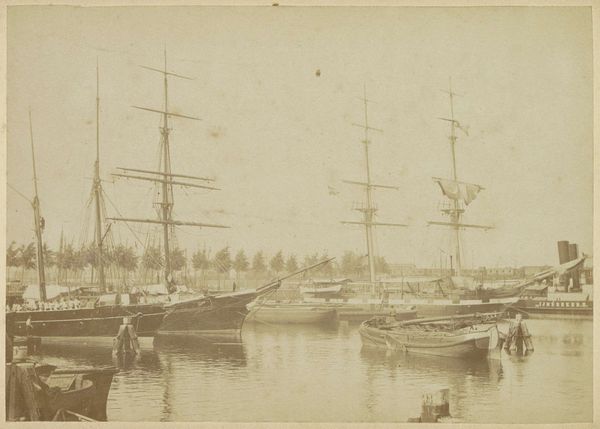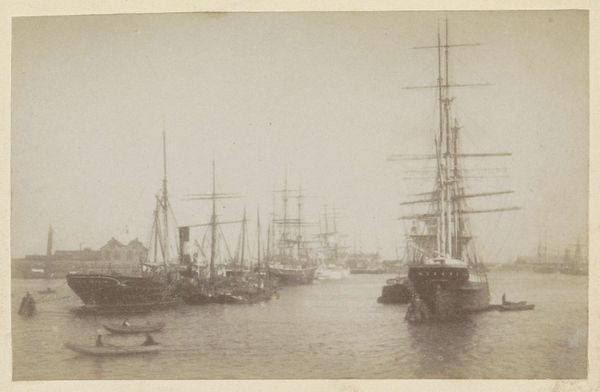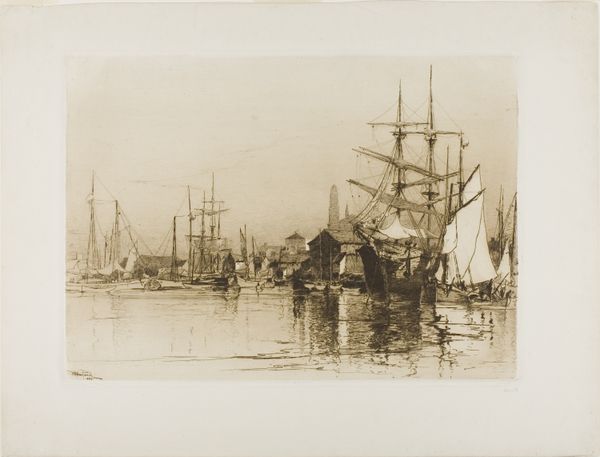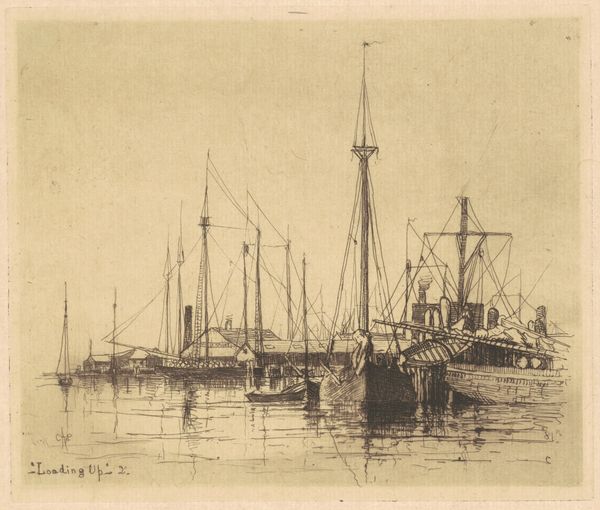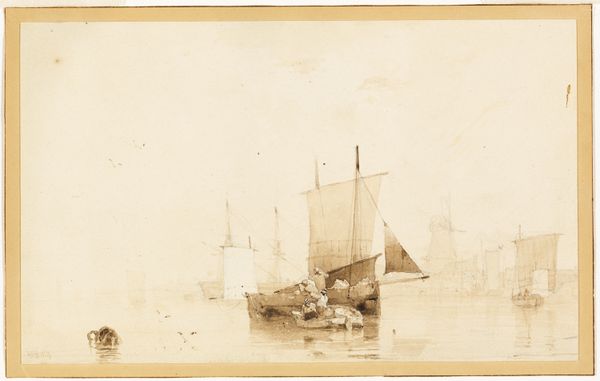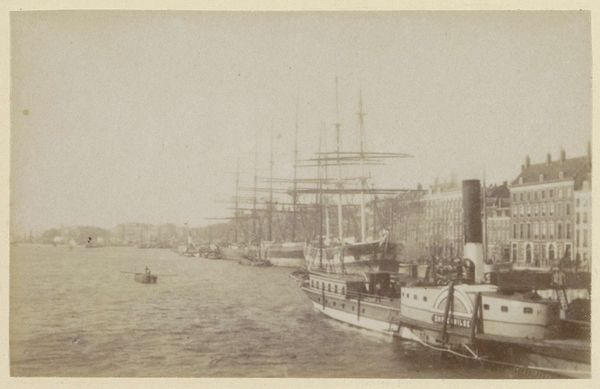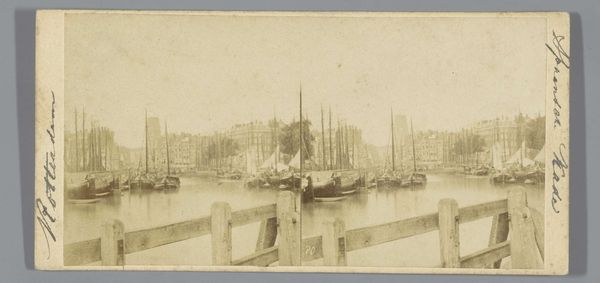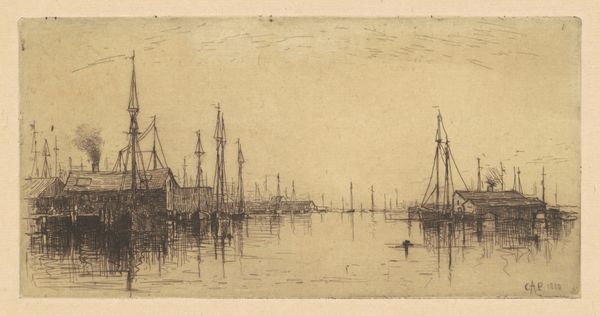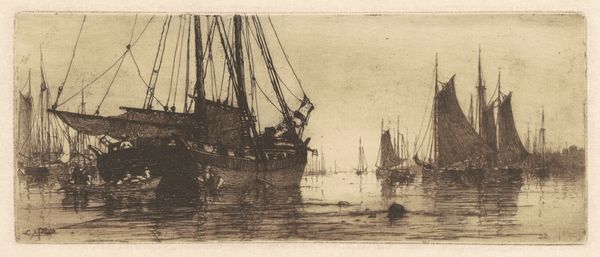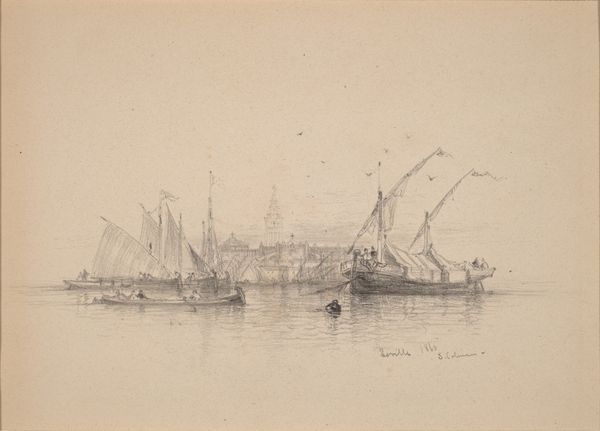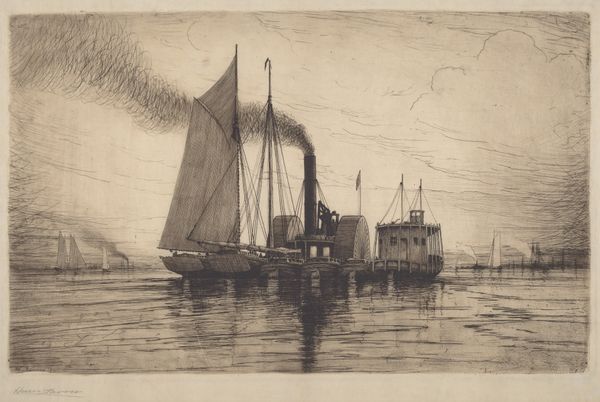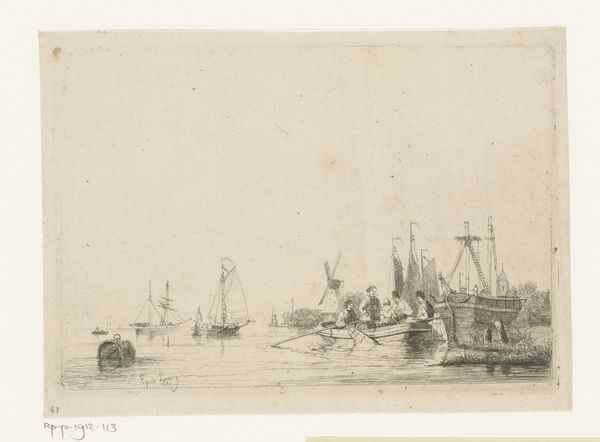
Schepen voor anker in het Oosterdok, rechts het schip de Merapi c. 1860 - 1900
0:00
0:00
print, photography
#
ship
# print
#
landscape
#
photography
#
cityscape
Dimensions: height 95 mm, width 135 mm
Copyright: Rijks Museum: Open Domain
Curator: Andries Jager's print, “Ships Anchored in the Oosterdok, the Ship Merapi on the Right”, from sometime between 1860 and 1900, offers us a glimpse into Amsterdam's maritime past. Editor: It’s an almost ghostly scene, isn't it? The soft focus and the sepia tones lend it a hazy, dreamlike quality. The masts of the ships create a complex network of lines that almost dissolves into the sky. Curator: Precisely. The print offers more than just a pretty picture; it serves as an artifact reflecting the city’s development as a crucial harbor. These docks were not just places of commerce but important points of exchange for cultural and social experiences. Editor: I agree, but let's talk about how the composition supports that interpretation. The repetition of the vertical masts gives a sense of bustling activity despite the stillness of the water. The light feels diffuse, which softens what could have been a harsh industrial landscape, creating a visual harmony. Curator: Considering Jager’s wider photographic body, it seems he consistently sought to document this transformation, imbuing images of labor and industry with a sense of dignified purpose, reflecting a shift in how society viewed progress. The Rijksmuseum owns this historical cityscape, which further cements its importance in the public sphere. Editor: A beautiful observation! Also the light feels key to that message; look how it reflects off the water's surface. It pulls us into the image and subtly emphasizes the materiality of the ships against the ethereal sky. There's almost a tension between the solidity of the vessels and the airy quality of the photograph itself. Curator: What resonates most profoundly with me is the capacity of art, such as this photographic print, to distill the intricate relationship between the populace and the environment. It compels us to consider the evolving urban landscape and its imprint on communal existence. Editor: I concur. Its misty aesthetic has prompted some unexpected thoughts for me, like reflecting on photography’s unique role in blurring the lines between documentation and artistry. It reveals how an image can resonate so powerfully over time, evoking complex sensations regarding material and form.
Comments
No comments
Be the first to comment and join the conversation on the ultimate creative platform.
